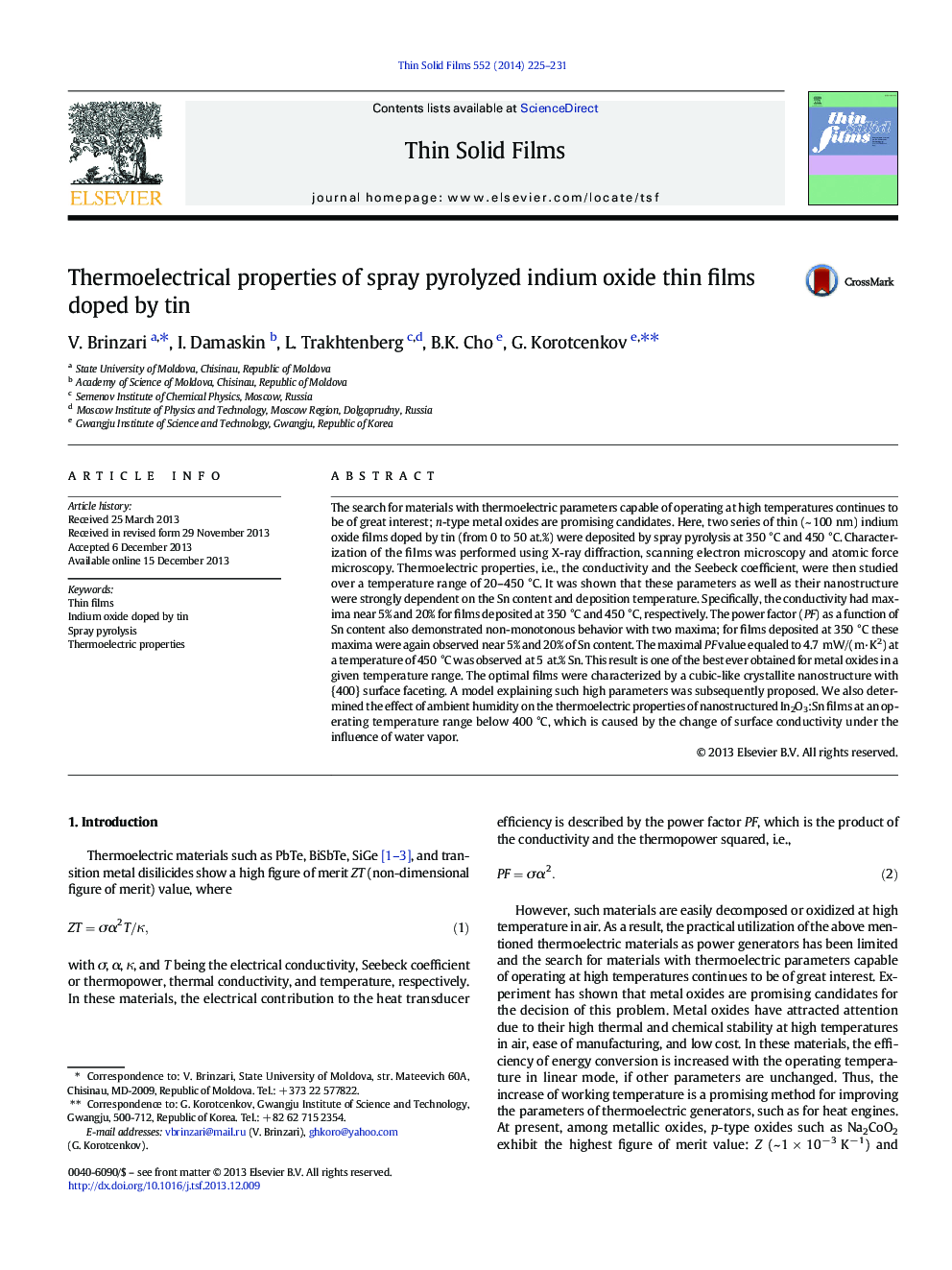| کد مقاله | کد نشریه | سال انتشار | مقاله انگلیسی | نسخه تمام متن |
|---|---|---|---|---|
| 1665711 | 1518052 | 2014 | 7 صفحه PDF | دانلود رایگان |
• ITO thin films with Sn amount up to 50 at.% were deposited by spray pyrolysis method.
• Nanostructure and thermoelectric properties strongly depend on Sn content.
• Best films provide relatively high thermopower and large power factor at 450 °C.
• Such films consist of cubic-like grains with {400} surface faceting.
• A model explaining such high parameters is proposed.
The search for materials with thermoelectric parameters capable of operating at high temperatures continues to be of great interest; n-type metal oxides are promising candidates. Here, two series of thin (~ 100 nm) indium oxide films doped by tin (from 0 to 50 at.%) were deposited by spray pyrolysis at 350 °C and 450 °C. Characterization of the films was performed using X-ray diffraction, scanning electron microscopy and atomic force microscopy. Thermoelectric properties, i.e., the conductivity and the Seebeck coefficient, were then studied over a temperature range of 20–450 °C. It was shown that these parameters as well as their nanostructure were strongly dependent on the Sn content and deposition temperature. Specifically, the conductivity had maxima near 5% and 20% for films deposited at 350 °C and 450 °C, respectively. The power factor (PF) as a function of Sn content also demonstrated non-monotonous behavior with two maxima; for films deposited at 350 °C these maxima were again observed near 5% and 20% of Sn content. The maximal PF value equaled to 4.7 mW/(m·K2) at a temperature of 450 °C was observed at 5 at.% Sn. This result is one of the best ever obtained for metal oxides in a given temperature range. The optimal films were characterized by a cubic-like crystallite nanostructure with {400} surface faceting. A model explaining such high parameters was subsequently proposed. We also determined the effect of ambient humidity on the thermoelectric properties of nanostructured In2O3:Sn films at an operating temperature range below 400 °C, which is caused by the change of surface conductivity under the influence of water vapor.
Journal: Thin Solid Films - Volume 552, 3 February 2014, Pages 225–231
